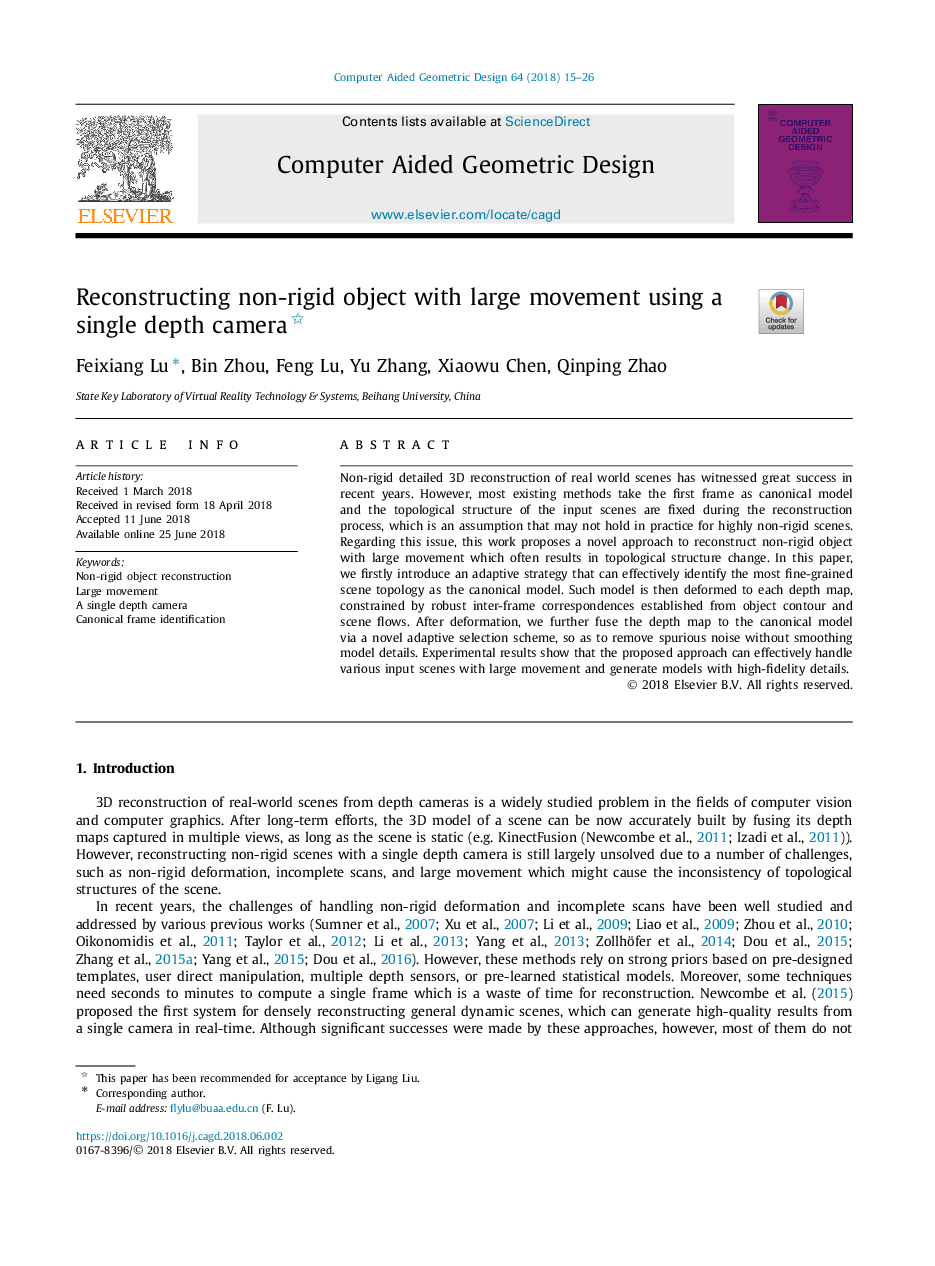| Article ID | Journal | Published Year | Pages | File Type |
|---|---|---|---|---|
| 6876595 | Computer Aided Geometric Design | 2018 | 12 Pages |
Abstract
Non-rigid detailed 3D reconstruction of real world scenes has witnessed great success in recent years. However, most existing methods take the first frame as canonical model and the topological structure of the input scenes are fixed during the reconstruction process, which is an assumption that may not hold in practice for highly non-rigid scenes. Regarding this issue, this work proposes a novel approach to reconstruct non-rigid object with large movement which often results in topological structure change. In this paper, we firstly introduce an adaptive strategy that can effectively identify the most fine-grained scene topology as the canonical model. Such model is then deformed to each depth map, constrained by robust inter-frame correspondences established from object contour and scene flows. After deformation, we further fuse the depth map to the canonical model via a novel adaptive selection scheme, so as to remove spurious noise without smoothing model details. Experimental results show that the proposed approach can effectively handle various input scenes with large movement and generate models with high-fidelity details.
Related Topics
Physical Sciences and Engineering
Computer Science
Computer Graphics and Computer-Aided Design
Authors
Feixiang Lu, Bin Zhou, Feng Lu, Yu Zhang, Xiaowu Chen, Qinping Zhao,
